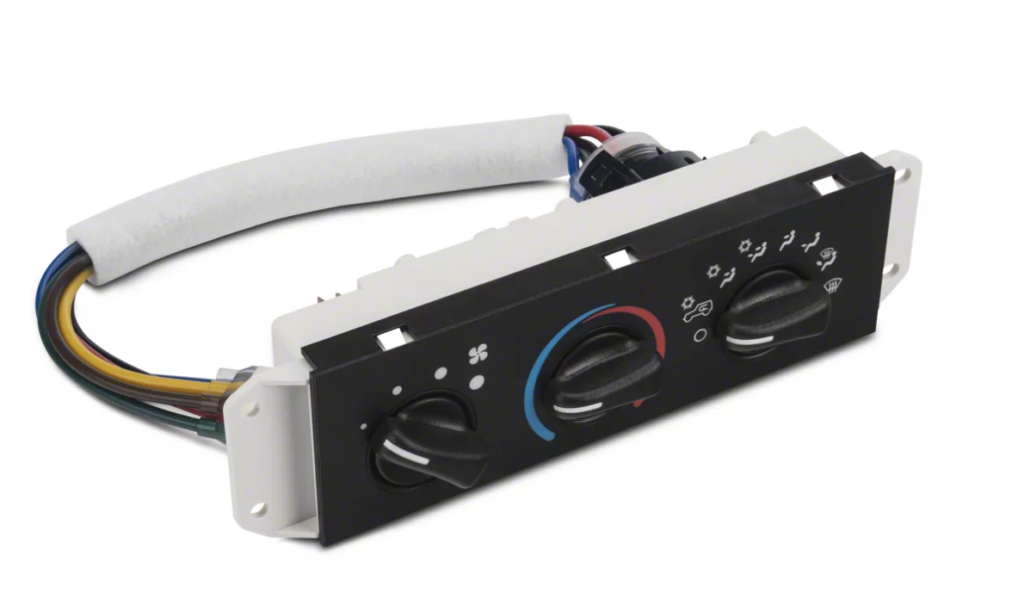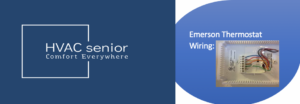Ac control panel not working? Find out why and how to fix it.
Inconvenient and irritating situations can arise when the ac control panel not working, especially in hot summers or freezing winters.
Your air conditioning system’s control panel, which enables you to change temperature, fan speed, mode, and other crucial parameters, is its brain.
When it stops working properly, it disturbs your comfort and puts you in an uncomfortable situation.

Related post>>>>>Air Conditioner Not Blowing Cold Air.
The AC control panel may not be operating as it should for a number of reasons. It could be a simple electrical problem, a broken connection, a malfunctioning thermostat, or even a more complicated technical issue with the HVAC system.
Whatever the source, the results are the same: less control over your home’s environment and a possible rise in energy usage.
This article will examine the typical causes of AC control panel problems, troubleshooting techniques that homeowners can use to identify and perhaps fix the problem on their own, and when to call in a specialist.
Restoring the functionality of your AC control panel is crucial for your comfort as well as for increasing the effectiveness of your cooling or heating system and avoiding irrational costs.
Causes of AC Control Panel not Working.
1.Electrical Power Supply.
The electrical power source is a crucial issue that frequently prevents the AC control panel from operating as intended.
This essential part of your air conditioning system needs a steady and constant flow of power to operate at its best.
The control panel may become unusable if this supply is disrupted since it can set off a chain reaction of problems.
To perform tasks like modifying the temperature, fan speed, and mode settings, the AC control panel needs a power source.
Different symptoms can be present if there is an interruption in the electrical supply. Sometimes, the control panel could not even come on, making it impossible for you to operate your air conditioning system.
Alternately, it can cause the panel to behave erratically and work only occasionally.
The electrical power supply to the AC control panel might be disrupted by a number of things. These could be damaged power outlets, blown fuses, tripped circuit breakers, loose electrical connections, etc.
To fix these problems and get the AC control panel working again, act quickly. Ignoring faults with the power supply can result in more serious problems and increased energy usage.The same solution can be used for a window ac control panel not working.
2.Control Panel Malfunction.
Control panel malfunction is a frequent and alarming problem that can cause the AC control panel to stop functioning.
Users connect with their air conditioning systems through the control panel, which acts as the interface, changing settings and ensuring indoor comfort.
When this important component breaks down, the entire HVAC system may be affected, leaving you with an unstable or unresponsive AC control panel.
Multiple types of control panel issues are possible. For instance, buttons or touch-sensitive controls can stop working, making it impossible for you to change the temperature or the mode.
Alternately, the control panel could show false data, such as faulty temperature readings, making it challenging to effectively assess the actual indoor conditions.
Wear and tear over time is one of the main reasons why control panels break down. Internal components may deteriorate as a result of dust, moisture, or electrical fluctuations, which might result in unpredictable behavior.
Additionally, the functionality of the control panel may be impacted by software bugs or firmware problems.
When an AC control panel stops functioning as a result of a control panel malfunction, it’s best to consult a qualified expert who can identify the issue and suggest any required fixes or replacements.
Resolving control panel difficulties as soon as possible is essential to getting your AC system working again and maintaining interior comfort.
Also read>>>>>Air Conditioner Keeps Turning On & Off.
3.Control Panel Display.
Your HVAC system’s control panel display is a key component, giving you access to crucial information and letting you change settings for the best possible level of comfort.
The AC control panel may not function properly when the control panel display is malfunctioning, which can be frustrating.
Numerous symptoms of a faulty display include a blank or unlit screen, flickering or distorted images, or difficulty reading or interpreting the information presented.
You may be unable to precisely monitor the temperature, fan speed, mode, and other important settings as a result of this disturbance.
The display on a control panel may malfunction for a variety of reasons. The screen’s effectiveness may be hampered by physical deterioration like cracks or moisture ingress.
Electrical problems, such as faulty display modules or loose connections, can also be to blame. Sometimes, software bugs or firmware issues can have an impact on how well a display works.
4.Sensor Issues.
When the AC control panel is not functioning as it should, sensor problems are frequently the root of the problem.
In order to accurately regulate temperature and operate efficiently, the HVAC system depends on sensors to provide exact data to the control panel.
If these sensors have issues, a malfunctioning AC control panel could result, which would be uncomfortable indoors.
Sensor malfunction or failure is a frequent sensor-related problem. This may be the consequence of physical sensor degradation from accumulations of dust or other material, moisture exposure, or electrical problems.
The control panel receives false information when sensors produce inaccurate data or stop working altogether, which results in improper temperature adjustments and system inefficiencies.
Additionally, problems with sensor calibration may potentially affect the AC control panel.
An AC control panel may not function optimally if sensors are not calibrated correctly or have deviated from their initial calibration, which could result in inaccurate interpretation of temperature and humidity levels.
Also read>>>>AC Fan not Spinning.
5.Mechanical Damage.
When the AC control panel is malfunctioning, mechanical damage is a major factor. Your HVAC system’s control panel, which manages temperature, fan speed, mode, and other settings, is an essential component.
An AC control panel may not operate properly if it has been physically damaged or has worn out.
There are several ways that a control panel can get mechanically damaged. Physical impacts, such as unintentional bumps or drops, could be involved.
These events could cause internal component dislodgment, cracked screens, or damaged buttons. Corrosion, circuitry issues, or control issues can also result from exposure to moisture, too much heat, or very low temperatures.
An inadequately functioning AC control panel is frequently a sign of mechanical deterioration. It may be difficult to change settings if buttons stop responding or perform inconsistently.
Your ability to precisely monitor and regulate your HVAC system may be hampered by distorted or nonexistent screen displays.
Also read>>>>Air Conditioner Leaking Freon.
Fixes of AC Control Panel not Working.
1.Check The Power Source.
- Verify Power Supply: When faced with an AC control panel not working, start by checking the power source to ensure it’s providing the necessary electricity.
- Check the Circuit Breaker: Inspect the circuit breaker in your electrical panel to ensure it hasn’t tripped. If it has, reset it by flipping it back to the “ON” position.
- Examine Fuses: Inspect any fuses related to your HVAC system. Replace any blown fuses with new ones of the same rating.
- Ensure Outlet Power: If the control panel is plugged into an outlet, ensure the outlet itself is functional. Plug in a different device to see if it powers up.
- Inspect Wiring: Examine the wiring connections leading to the control panel. Look for loose or disconnected wires and reattach them securely.
- Consider Power Surges: Check if there has been a recent power surge, which could have damaged the control panel or other components. Consider using surge protectors in the future.
- Test with Another Outlet: If possible, try plugging the control panel into a different power outlet to rule out problems with the original outlet.
- Consult a Professional: If, after checking the power source, the AC control panel is still not working, it may indicate a more complex issue. In such cases, it’s advisable to consult a professional HVAC technician who can diagnose and address the problem effectively.
You might need to explore more on Air Conditioner Dry Mode.
2.Resetting The Control Panel.
- Identify the Control Panel: Locate the AC control panel on your HVAC system. It’s typically situated on the wall or within the unit itself.
- Power Off: Ensure the AC unit is powered off completely. You can do this by switching off the circuit breaker or unplugging the unit from the power source.
- Locate the Reset Button: Some control panels have a reset button or a reset function. Look for this button or consult the user manual to find its location.
- Press and Hold Reset: Once you’ve found the reset button, press and hold it for about 5-10 seconds. Be patient, as it may take a moment for the reset process to complete.
- Power Back On: After releasing the reset button, power on the AC unit again by turning on the circuit breaker or plugging it back in.
- Observe Operation: Monitor the AC control panel to see if it has resumed normal operation. Check if you can now adjust settings, and if the display is functioning correctly.
- Repeat if Necessary: In some cases, a second reset attempt may be required if the issue persists. Simply repeat the process.
3.Troubleshooting The Control Panel Display.
- Inspect for Physical Damage: Begin by visually examining the control panel display for any signs of physical damage, such as cracks or moisture. Damage can hinder proper functioning.
- Check for Loose Connections: Ensure that all cable connections and wiring leading to the display are secure. Loose connections can disrupt communication between the display and the control panel.
- Restart the Control Panel: Sometimes, a simple restart can resolve display issues. Turn off the AC control panel and then power it back on. Check if the display starts working correctly.
- Adjust Brightness and Contrast: If the display appears dim or faded, check if there are brightness and contrast settings. Adjust these settings to see if it improves visibility.
- Reset to Factory Defaults: Consult the user manual for instructions on how to reset the control panel display to its factory default settings. This can often resolve software-related issues.
- Check for Error Codes: If the display shows error codes, consult the user manual or manufacturer’s documentation to interpret the codes. This can provide valuable insights into the problem.
- Update or Reinstall Firmware: In some cases, updating or reinstalling the control panel’s firmware can address software glitches. Follow the manufacturer’s guidelines for firmware updates.
Also read>>>>Air conditioner makes whooshing noise.
4.Rechecking Sensor Issues.
- Verify Sensor Functionality: Begin by confirming if the sensors in your HVAC system are functioning correctly. These sensors provide crucial data to the AC control panel.
- Clean Sensors: Dust, dirt, or debris can accumulate on sensors, affecting their accuracy. Gently clean the sensors with a soft brush or a can of compressed air to remove any obstructions.
- Check Sensor Placement: Ensure that the sensors are correctly positioned. They should be in the right location to measure temperature and humidity accurately.
- Calibrate Sensors: Some sensors may require calibration. Consult the user manual or manufacturer’s instructions on how to calibrate the sensors properly.
- Inspect Wiring and Connections: Examine the wiring leading to the sensors and their connections. Loose or damaged wires can disrupt the communication between the sensors and the control panel.
- Test Sensor Readings: Use a separate thermometer or hygrometer to verify the temperature and humidity readings from the sensors. Compare these readings with what the control panel displays to check for discrepancies.
Frequently Asked Questions (FAQs).
What can cause my AC control panel to stop working?
Several factors can lead to an AC control panel not working correctly, including electrical power supply issues, control panel malfunctions, sensor problems, and mechanical damage.
How can I troubleshoot power supply issues with my AC control panel?
To troubleshoot power supply issues, check the circuit breaker, inspect fuses, ensure the outlet has power, examine wiring connections, and consider the possibility of power surges. Consult a professional if needed.
My AC control panel is unresponsive. How can I try to fix it?
If the control panel is unresponsive, resetting it can help. Locate the reset button, power off the unit, press and hold the reset button for 5-10 seconds, then power it back on. Repeat if necessary or consult a technician.
What should I do if my control panel display is not working properly?
Troubleshooting the control panel display involves inspecting for physical damage, checking connections, restarting the control panel, adjusting brightness/contrast, resetting to factory defaults, and consulting a technician if issues persist.
How can I address sensor issues affecting my AC control panel?
To address sensor issues, verify sensor functionality, clean sensors, check sensor placement, calibrate sensors if necessary, inspect wiring and connections, and compare sensor readings with an external source. Consult a technician if problems persist.
Can physical damage cause my AC control panel not to work?
Yes, physical damage such as cracks, moisture exposure, or impacts can lead to mechanical damage, disrupting the control panel’s functionality and causing it not to work correctly.
What if none of the troubleshooting steps work for my AC control panel issue?
If none of the troubleshooting steps resolve the problem and your AC control panel is still not working as expected, it may indicate a more complex issue. In such cases, it’s advisable to contact a professional HVAC technician for a thorough diagnosis and potential repairs.
Also read>>>No Water Coming Out of AC Drain Pipe.
Conclusion.
In conclusion, it’s critical to adopt a systematic approach to locate and fix the problem when an AC control panel isn’t functioning properly.
Resetting the control panel and starting with a power supply check can frequently solve common issues.
Maintaining correct temperature control requires performing sensor functionality checks and troubleshooting the control panel display.
Recognizing the possibility of mechanical damage also emphasizes how crucial it is to handle the control panel with care.
In the event that these efforts are unsuccessful, consulting a professional is a wise course of action to guarantee the effective operation of your HVAC system and your continuing indoor comfort.









